Marble Shikakai Shampoo Bar
| Phase | Ingredient | Percent (%) | Weight (g) |
|---|---|---|---|
| Phase 1 | BTMS25 | 3 | 3 |
| Cocoa butter | 3 | 3 | |
| Stearic Acid | 2.4 | 2.4 | |
| Phase 2 | SCI (Sodium Cocoyl Isethionate) | 47 | 47 |
| Coconut milk powder | 5 | 5 | |
| Corn starch | 20 | 20 | |
| Phase 3 | Cocamidopropyl betaine | 10 | 10 |
| DL-Panthenol | 2 | 2 | |
| Hydrolyzed rice protein | 2 | 2 | |
| Citric acid | 0.6 | 0.6 | |
| Fragrance oil | 1 | 1 | |
| Preservative | 1 | 1 | |
| Shikakai powder (mixed with part of the shampoo dough) | 3 | 3 |
This recipe is formulated for wavy or curly hair. If you have never made a solid shampoo bar before, I recommend reading this post here about shampoo bar for beginners.
If you want to know more about hair types and each type’s needs please check out this post here.
If you want to add more style and design to your shampoo bars, the marble technique is an easy way to give your bars a little twist and an exciting design. Using the shikakai powder gives your bars a marble design with natural color.
Shikakai is one of the Ayurvedic herbs that is used in hair care. Shikakai helps remove dirt and excess oil from the scalp and is known for promoting hair growth. Shikakai is rich in cleansing properties and a good source of vitamins that help nourish the hair.
The ingredients create a smooth and soft dough texture, which we use to create the design. Once the bar hardens, the marble look is set, and we can enjoy our beautiful bar of shampoo.

This recipe is for 100g, making one big shampoo bar. For alternatives and more information, check the notes below.
Method:
- In a heat-resistant beaker, Add the phase A ingredients. Start with the stearic acid.
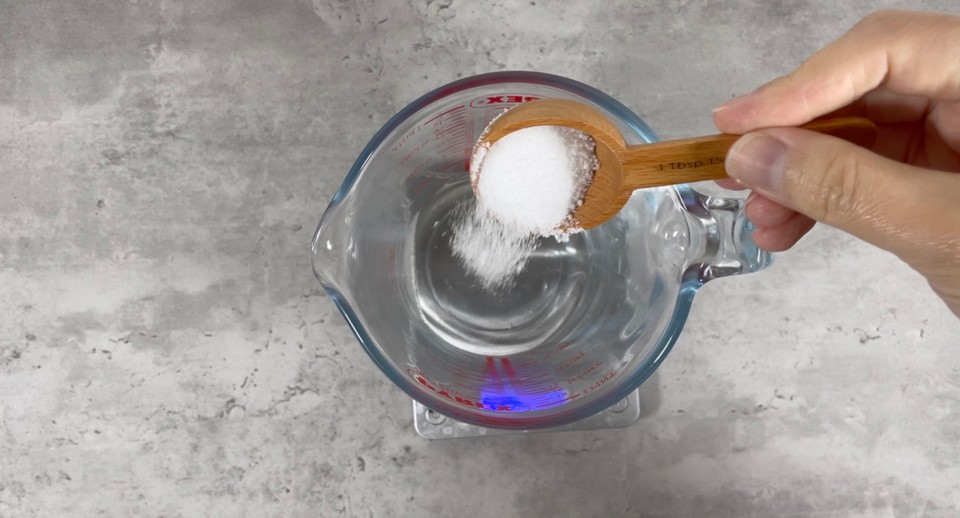
- Add the BTMS25.
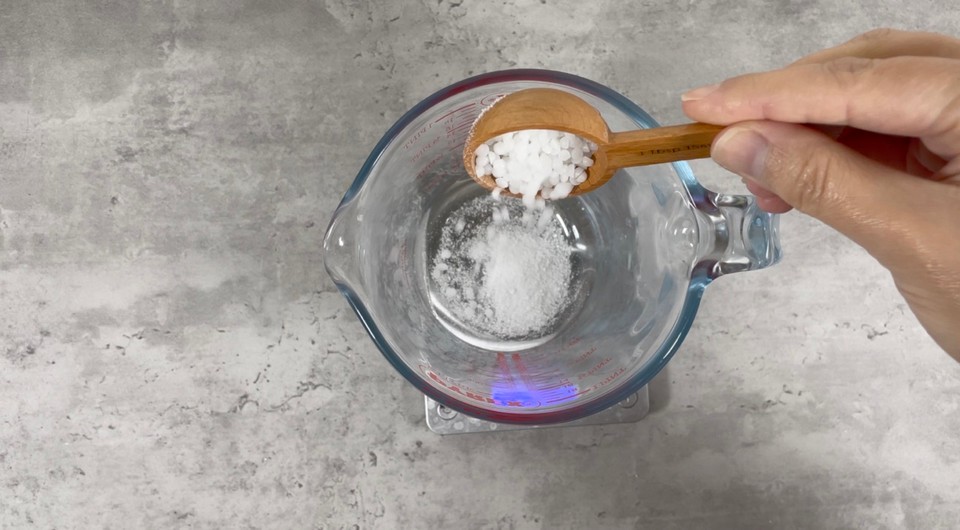
- Add the cocoa butter.

- Place phase A into a double boiler on medium heat.
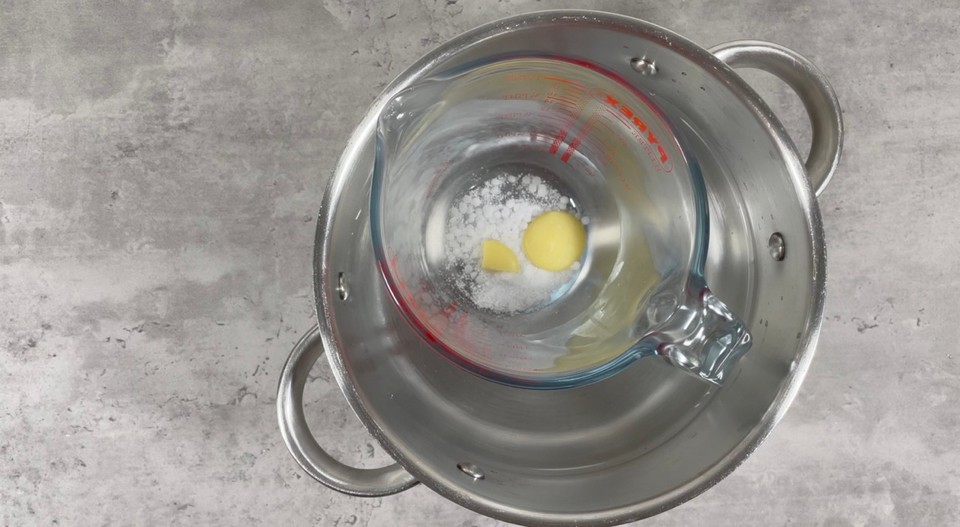
- Meanwhile, prepare phase B in a different container. Add the SCI (using a mask to avoid respiratory irritation).
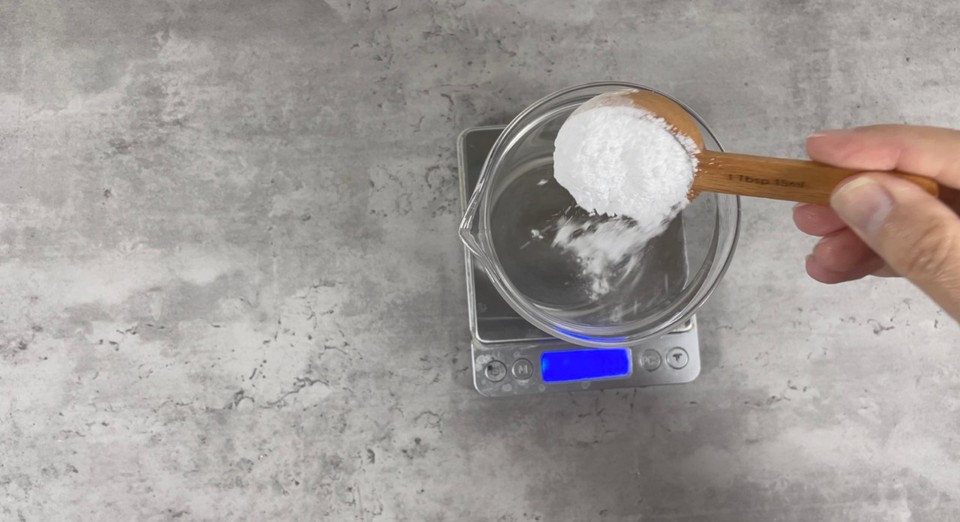
- Add the corn startch.
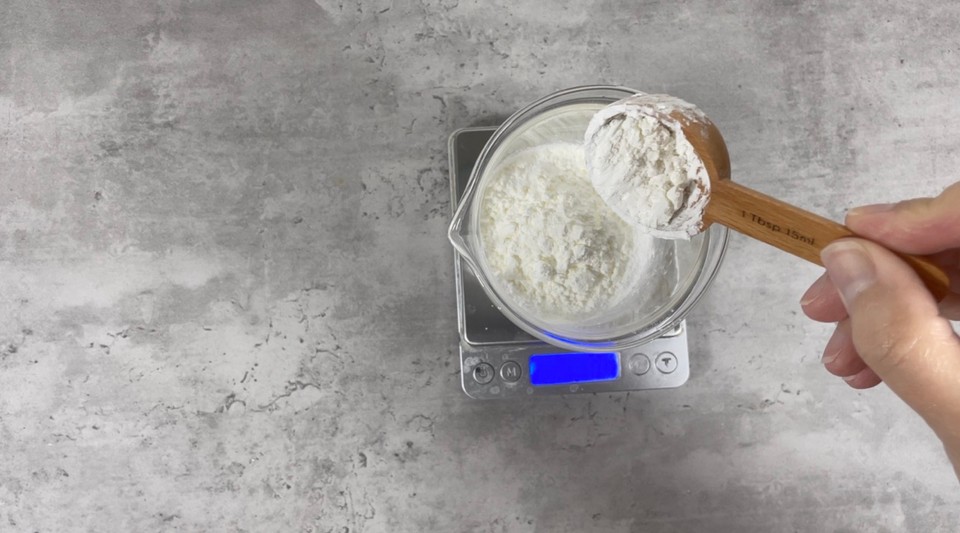
- Add the coconut milk powder.

- Prepare phase C in a different container. Add the Cocamidopropyl betaine.
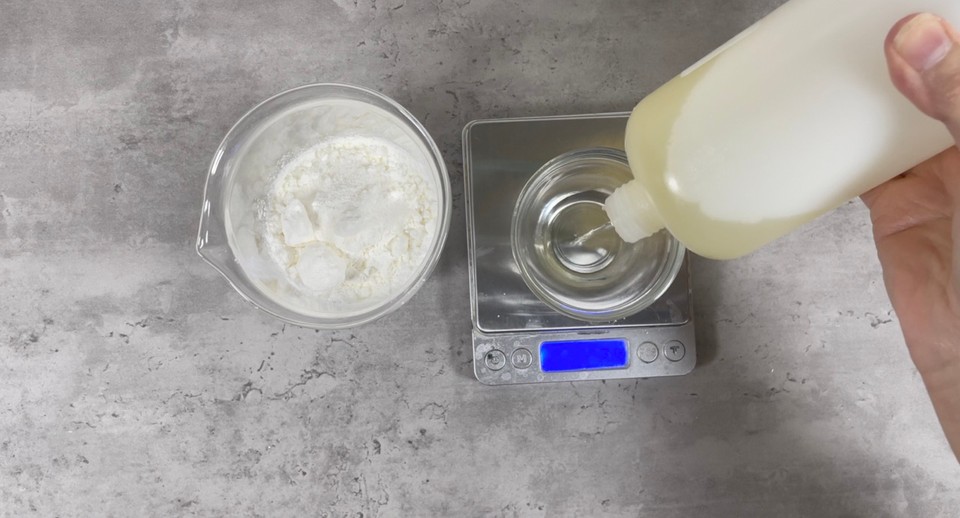
- Add the Panthenol.
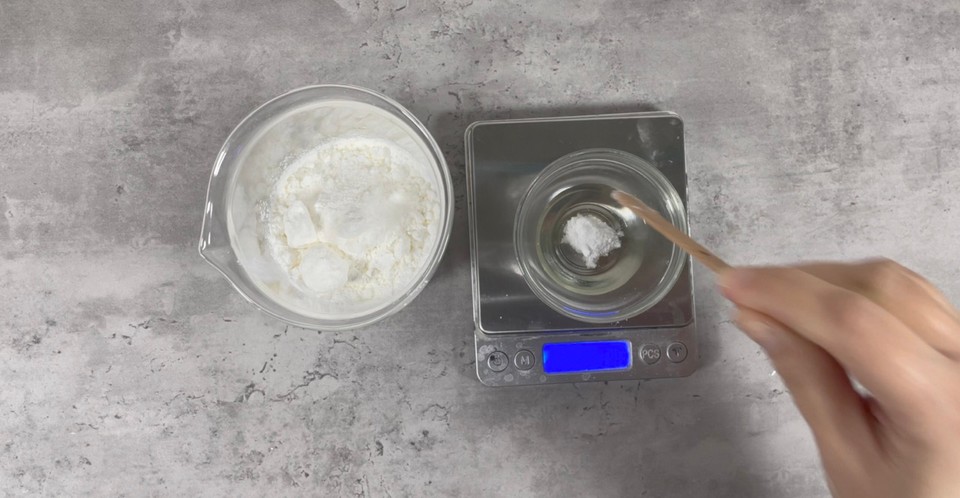
- Add the citric acid.
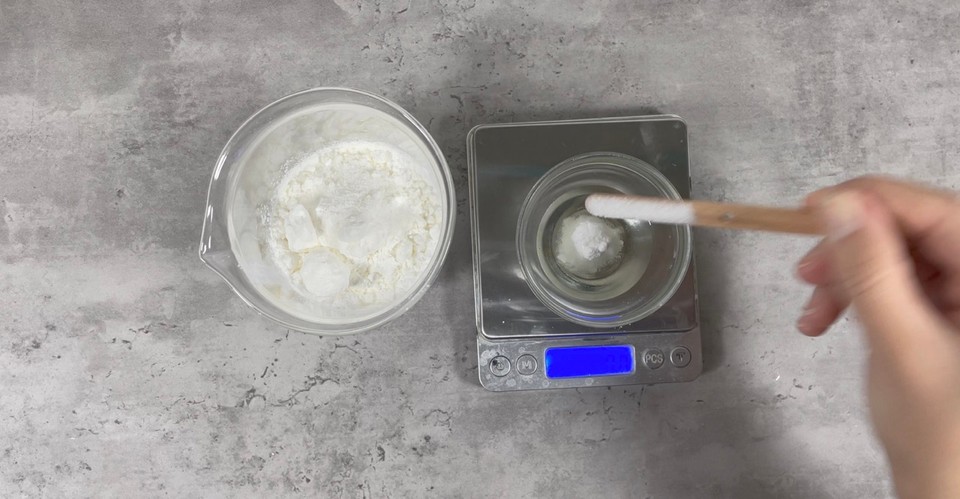
- Add the Hydrolyzed rice protein.

- Add the sfragrance oil.
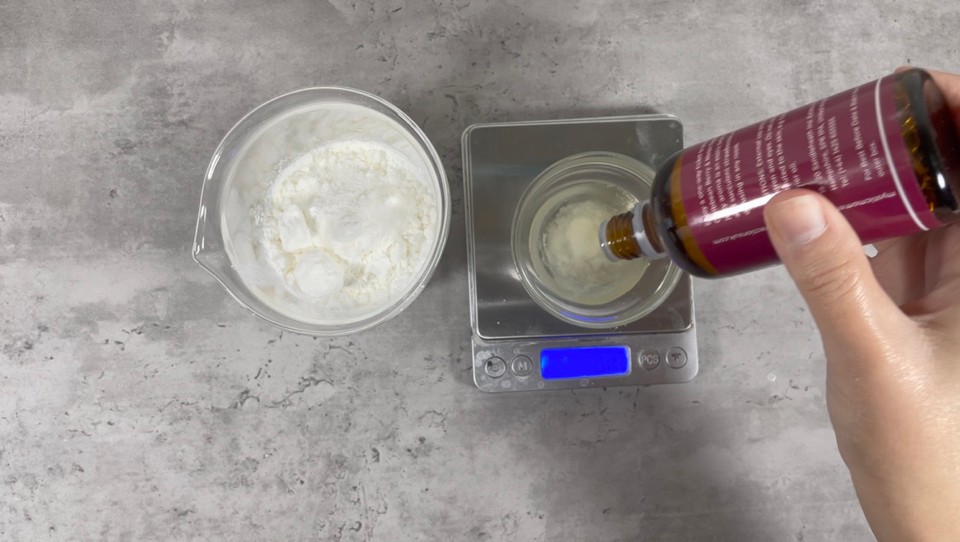
- Add the preservative. Mix to combine.
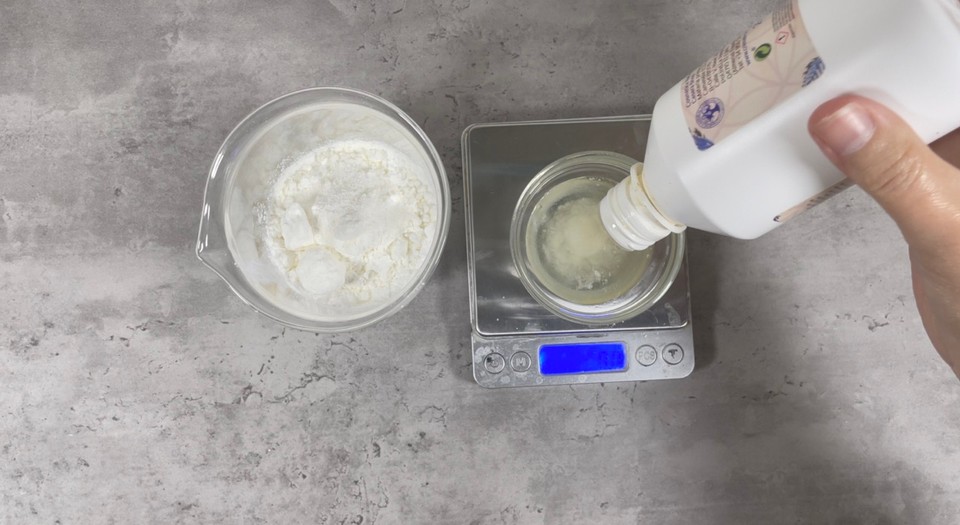
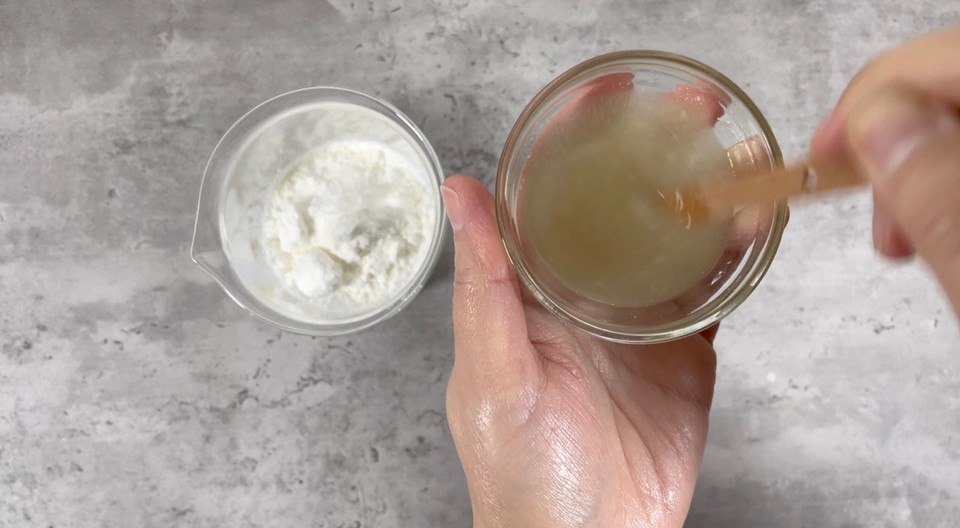
- Once phase A is melted, remove it from the heat.
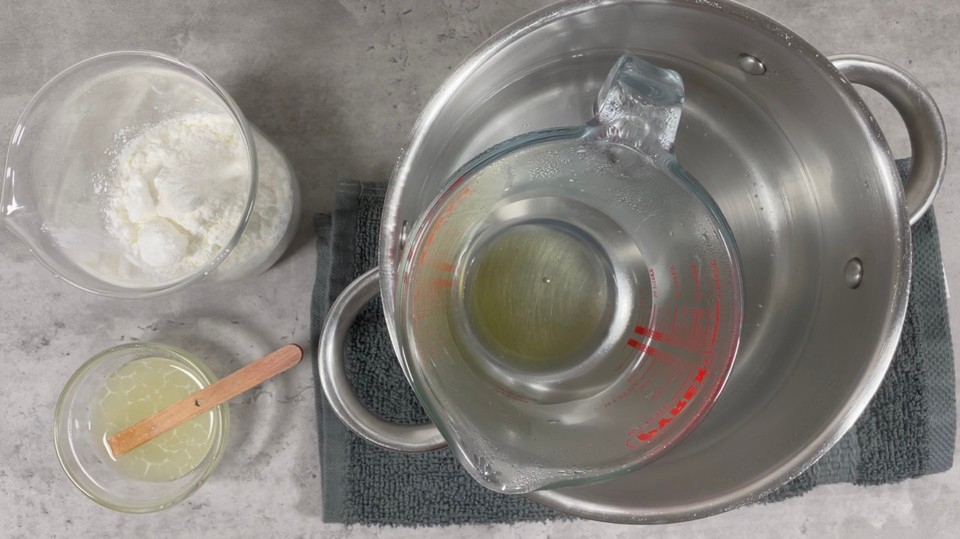
- Add phase B into phase A and mix to combine.
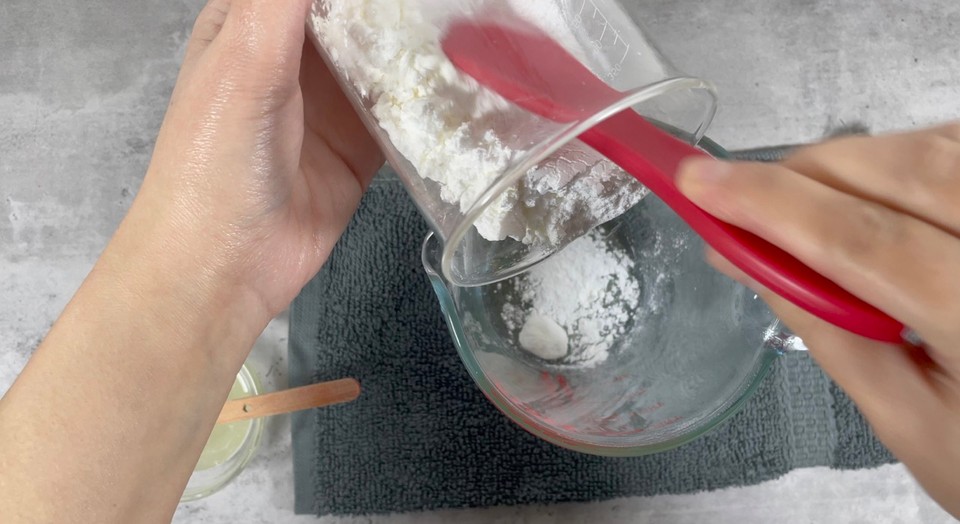
- Add phase C to phase A, and mix to combine.
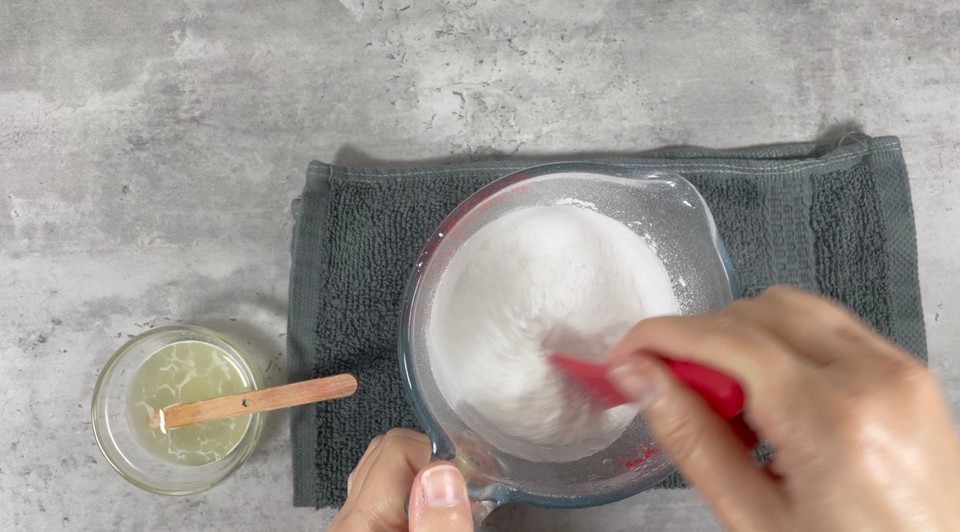
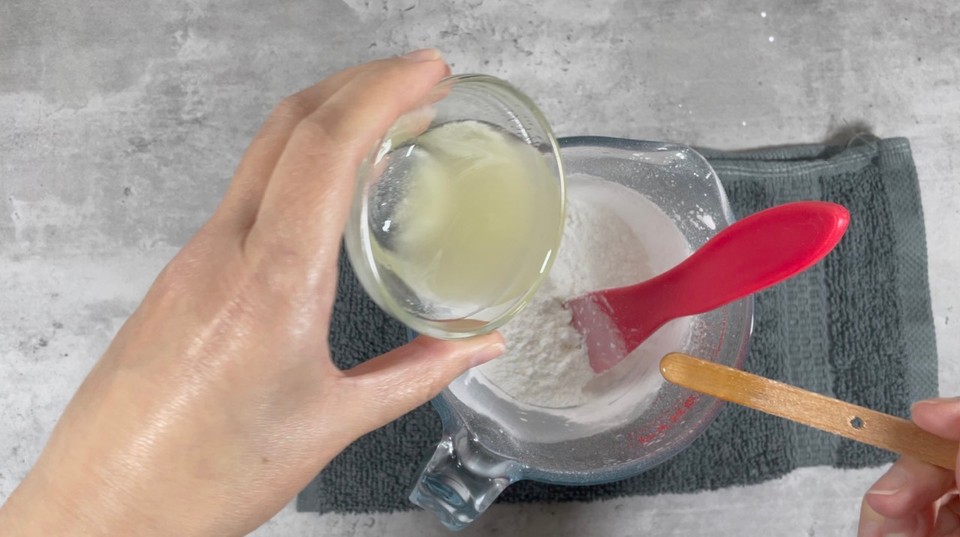
- The mixture should be in the form of a dough.
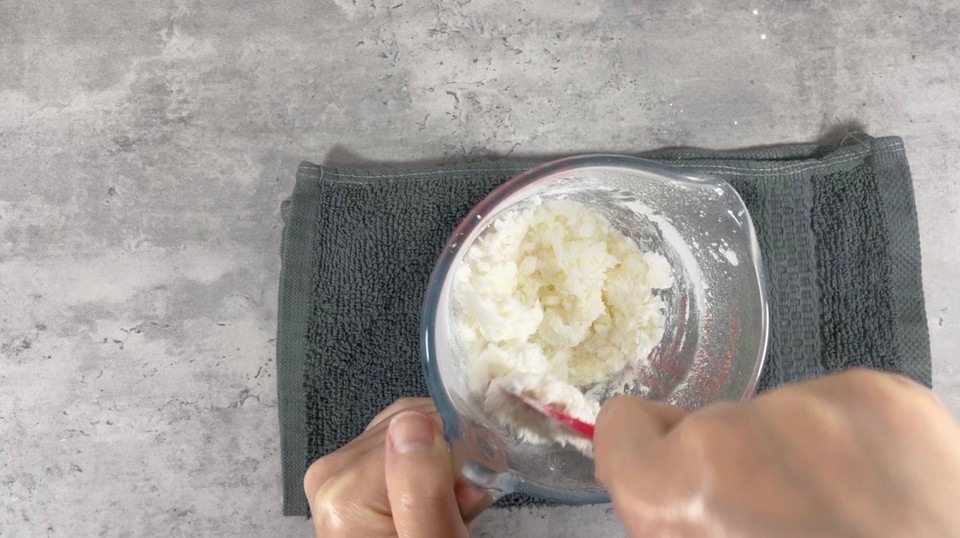

- Check the ph and adjust if necessary. (To measure the ph, take 1g of the mixture and mix it with 9g of distilled water). ph should be between 4.5 to 5.5. Please check this post here to read more about ph adjustments in cosmetics.
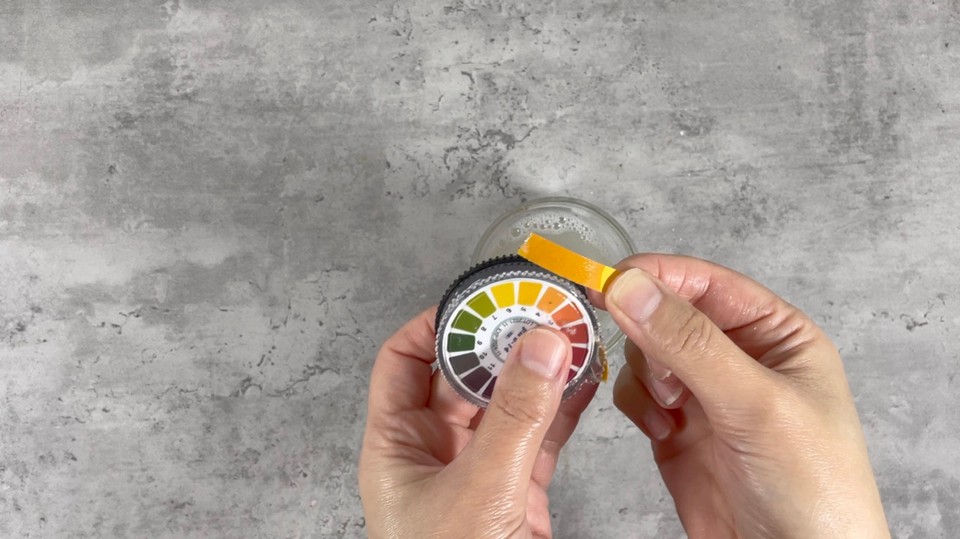
- Separate 1/4 of the shampoo dough and place it in the beaker.


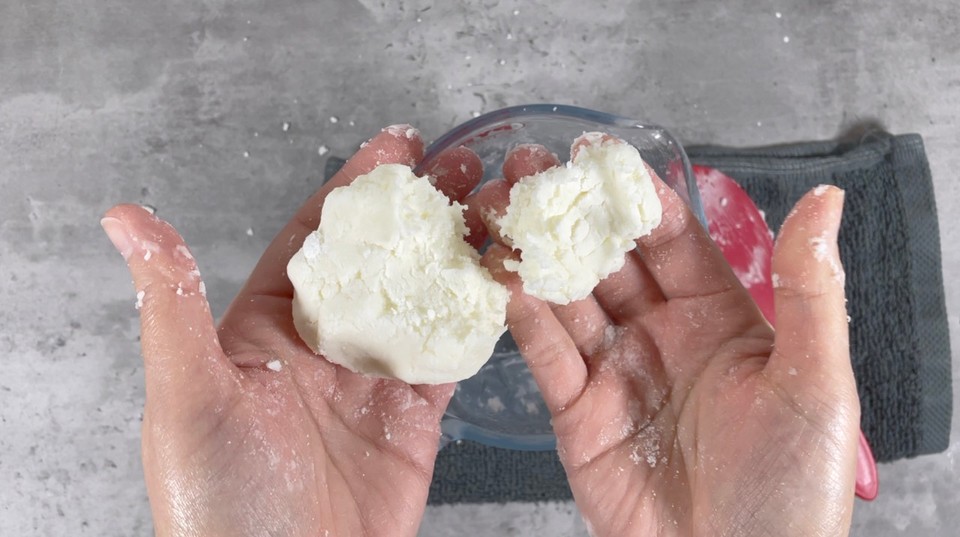
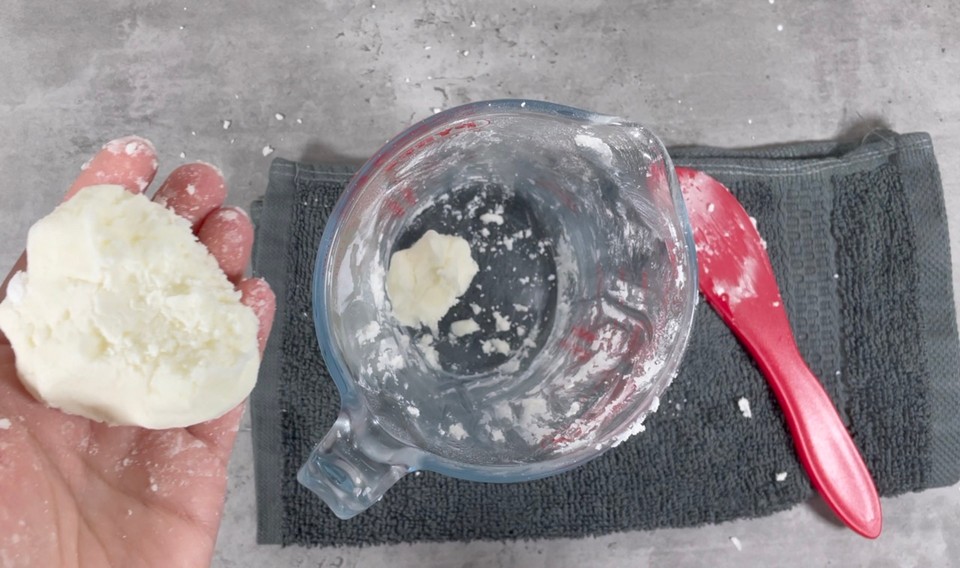
- Add the shikakai powder to the 1/4 part of the shampoo dough.
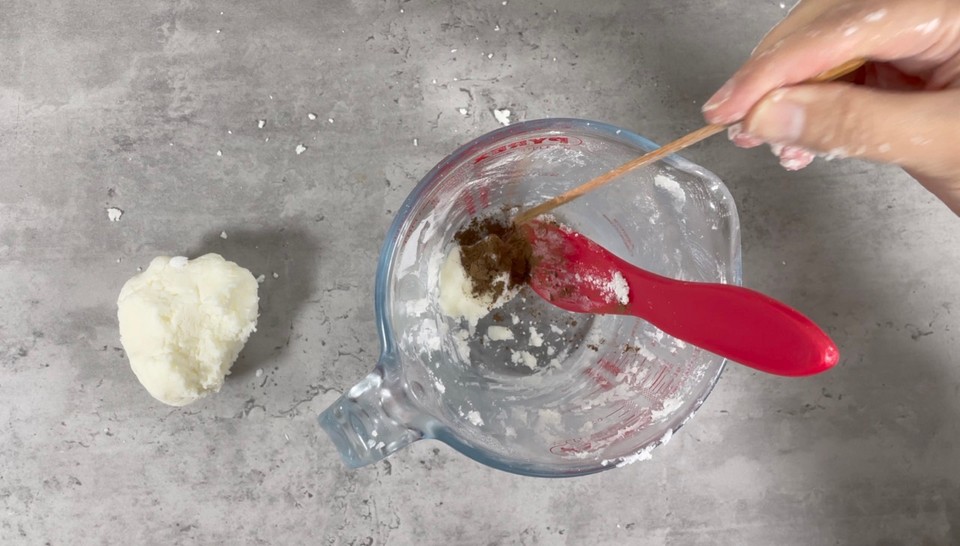
- Combine the shikakai powder into the dough.
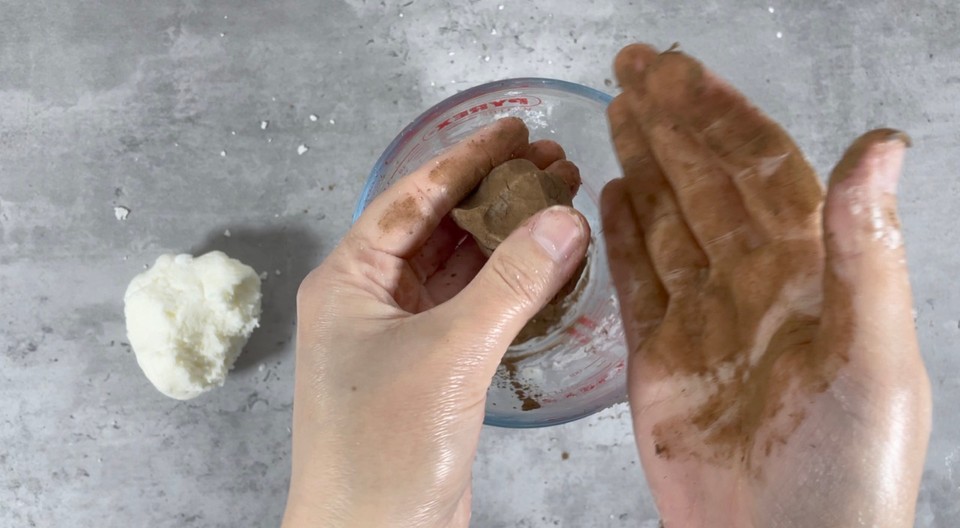
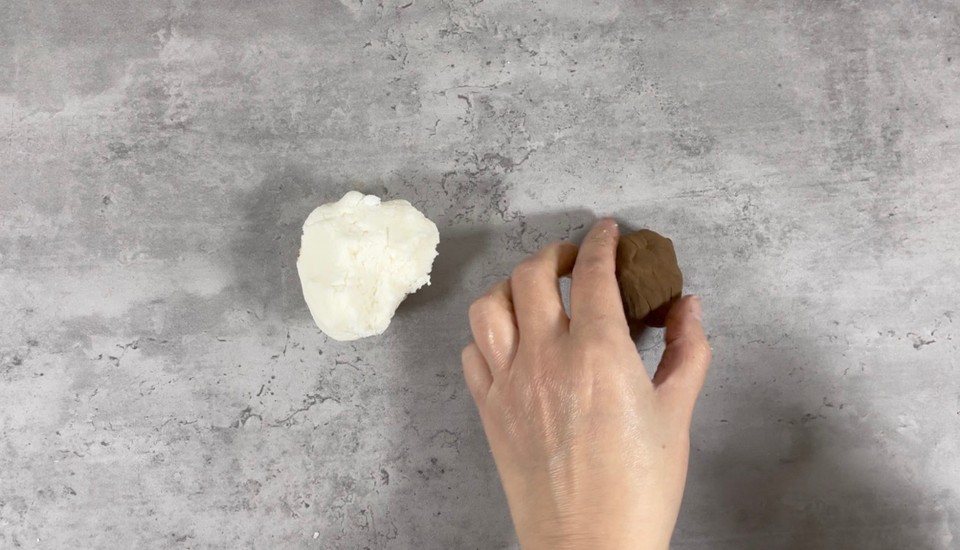
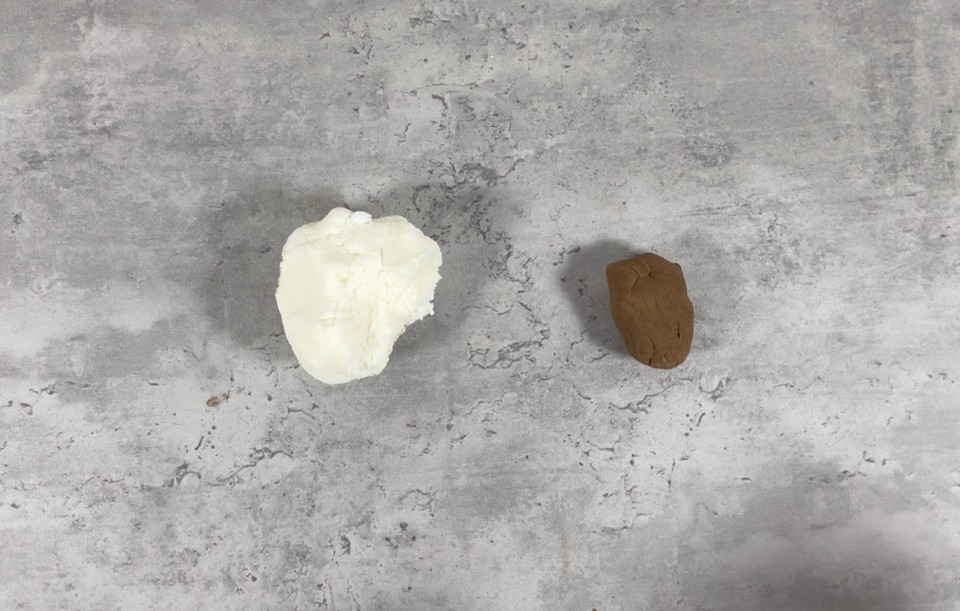
- Divide the shikakai dough into four parts.
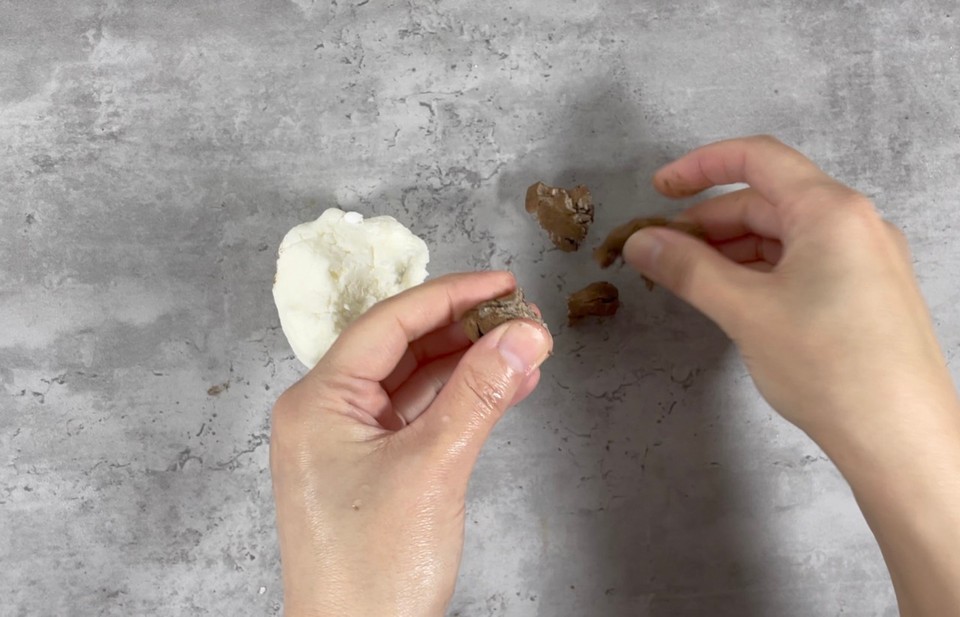
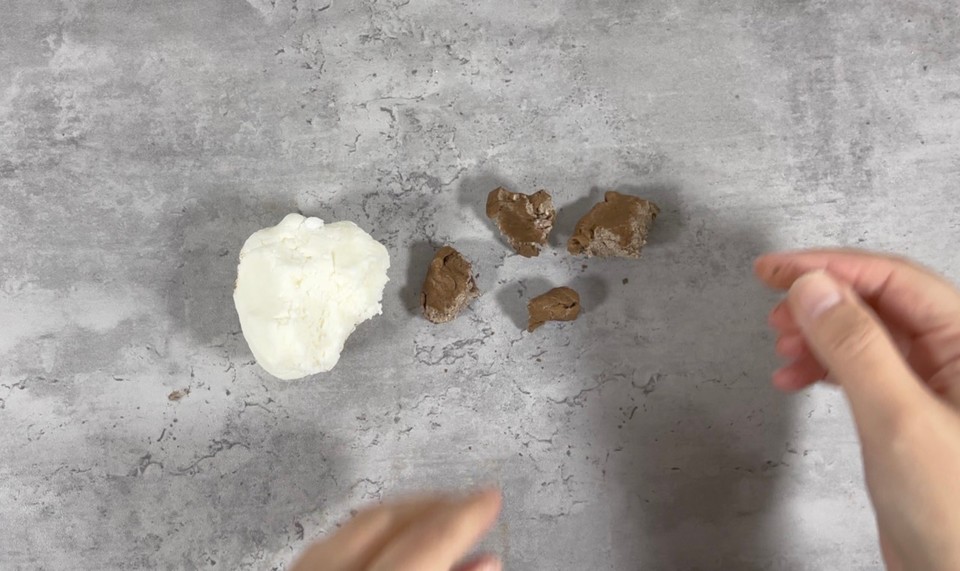
- Incorporate the four shikakai small dough parts into the rest of the shampoo dough.
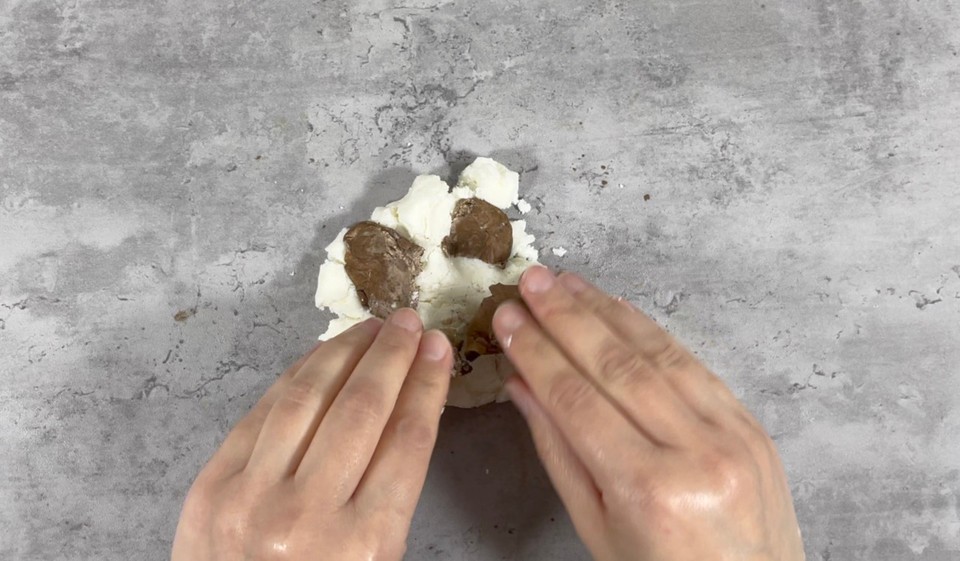
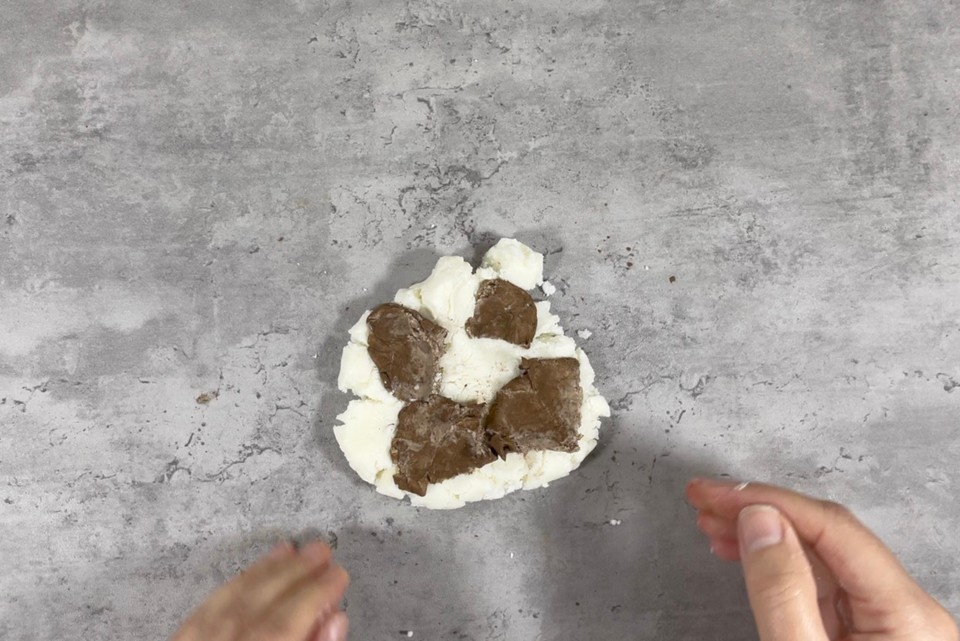
- Fold the dough, use your fingers to insert the four small parts of the shikakai dough.

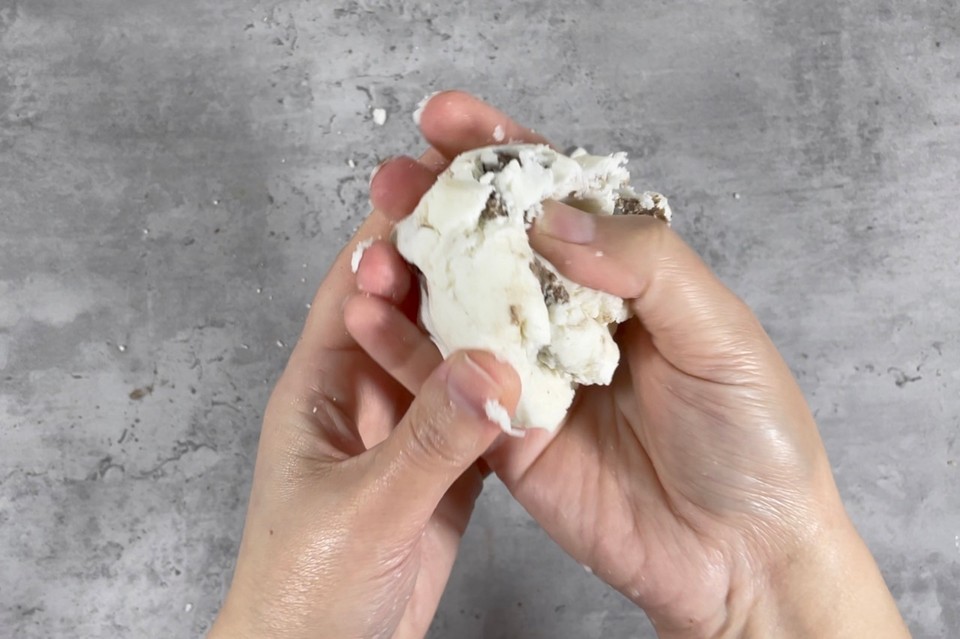
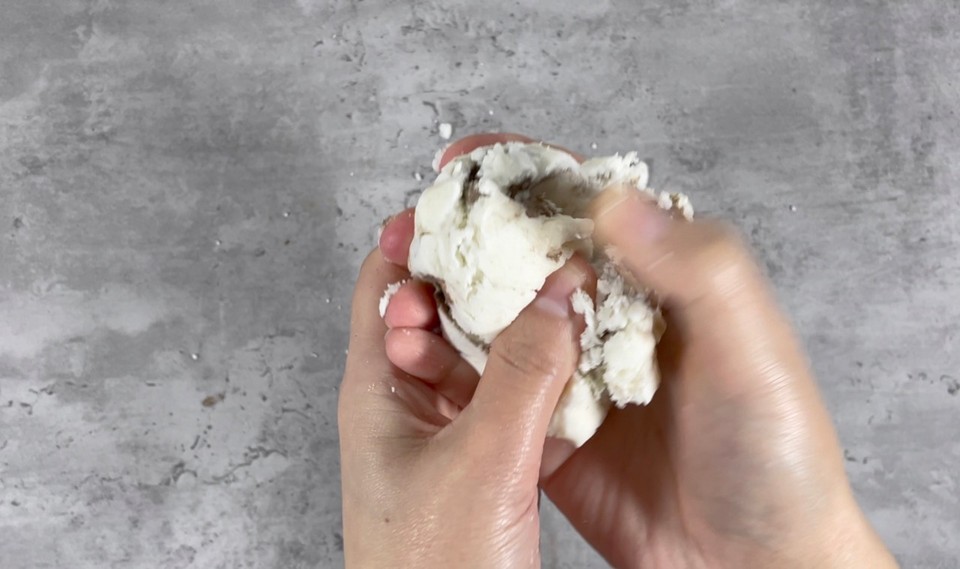
- Form a ball.
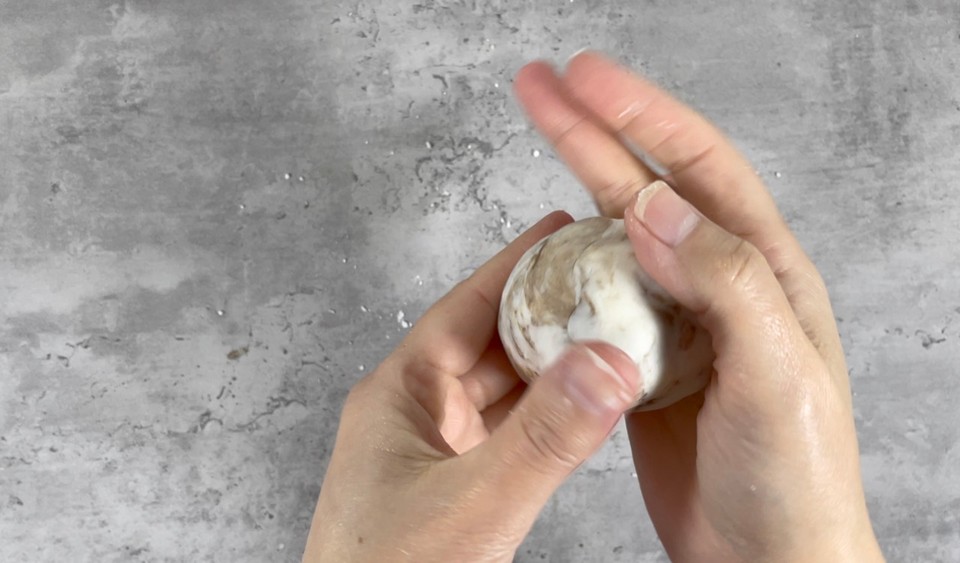
- Shape the shampoo with your hands.
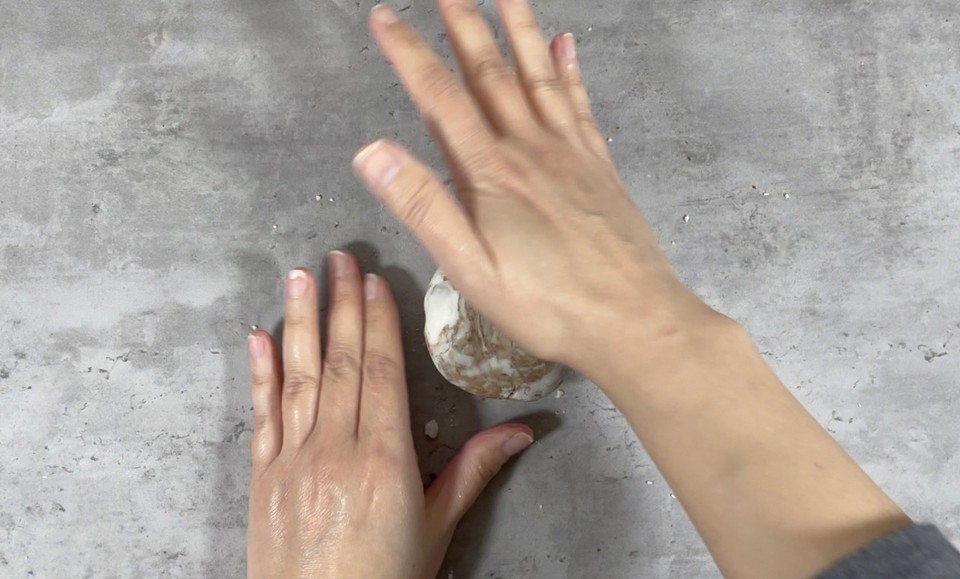

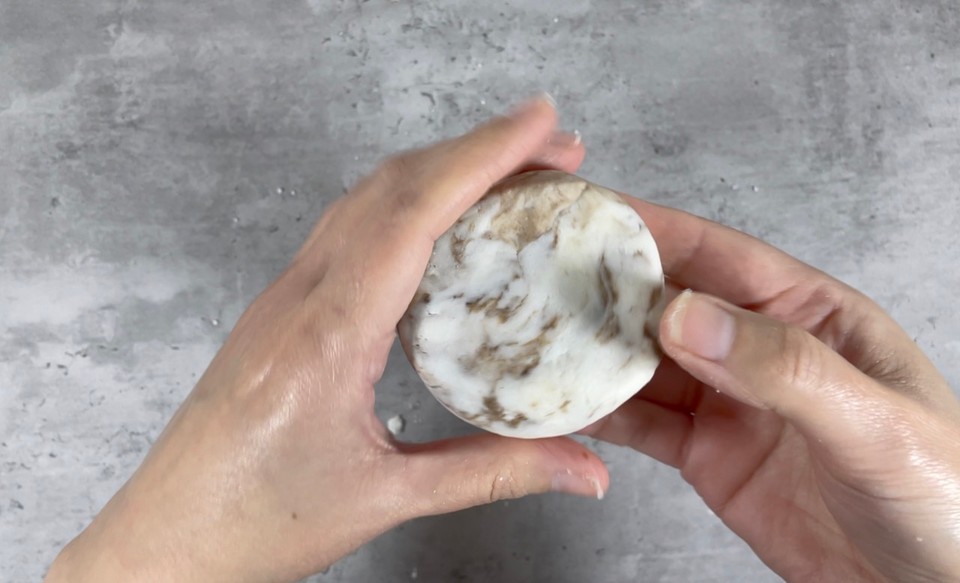

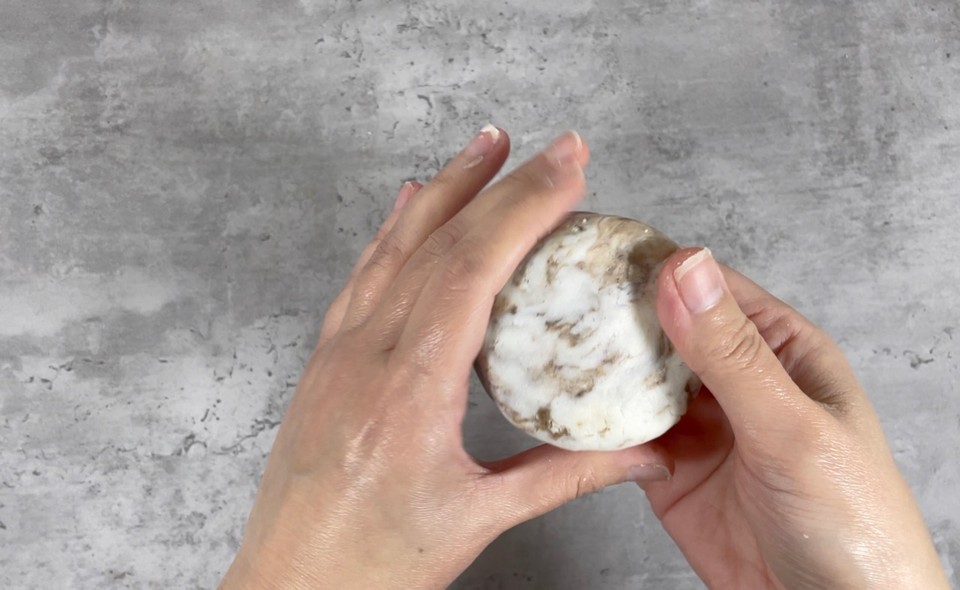
- Let the shampoo bar dry for 48 hours before using.
Notes:
BTMS525 is an emulsifying and conditioning agent. It is plant-based. The INCI is Behentrimonium Methosulfate (and) Cetyl Alcohol (and) Butylene Glycol. You can replace it with BTMS50, Varisoft EQ 65 (INCI Name: Distearoylethyl Dimonium Chloride (and) Cetearyl Alcohol) or Emulsense HC (INCI Name: Brassicyl Isoleucinate Esylate (and) Brassica Alcohol) in case you choose Emulsense™ HC, you will probably need to raise the PH, and it is only compatible with arginine for adjusting the pH. Check this post on how to adjust PH.
You can replace the cocoa butter with shea butter, mango butter, or kokum butter.
If you don't have stearic acid, you can replace it with: 1.4g berry wax (or myrica fruit wax) and 1g cetyl alcohol (to replace 2.4g stearic acid).
Cornstarch is a very available ingredient but can be replaced with arrowroot powder or tapioca starch. The reason to add starch is to help thicken the bar, and also, the starch helps absorb excess oil from the hair.
SCI is the solid surfactant for this shampoo bar. You can replace it with Sodium Cocoyl Glutamate, Sodium Coco Sulfate (SCS) or Sodium Lauryl Sulfoacetate (SLSA).
You can replace the coconut milk powder with almond milk powder or goat milk powder.
Cocamidopropyl betaine is a liquid mild surfactant. You can replace it with coco glucoside, decyl glucoside, or Sodium cocyl apple amino acids.
DL Panthenol (vitamin B5) reduces static in the hair. It is an excellent moisturizer. It can be replaced with: vegetable inulin powder, Hydrolyzed wheat protein, or allantoin. If you choose allantoin, use only 0.5g of allantoin and add 0.5g to sodium lactate.
Hydrolyzed rice protein adds volume to hair. You can replace it with other hydrolyzed proteins, like silk or oat protein.
Since most surfactants have a high PH level, I add 0.6g of citric acid to lower the PH level. Hair-friendly ph is between 4.5 to 5.5. The citric acid should be dissolved in a water base ingredient such as the liquid surfactant. For more ph adjustments in cosmetics, check this post.
A preservative is a must since the shampoo bar contains water ingredients and will be in touch with water in the shower. Check with your supplier the percentage of the preservative you chose, and make sure to use a suitable preservative with this product's ph range.
When you choose fragrance or essential oil, make sure to search and make sure that the fragrance is suitable for a shampoo. Some fragrances or essential oils can cause great irritation to the skin. If you want to be on the safe side start with essential oils such as lavender, tea tree oil, rosemary, or geranium.

